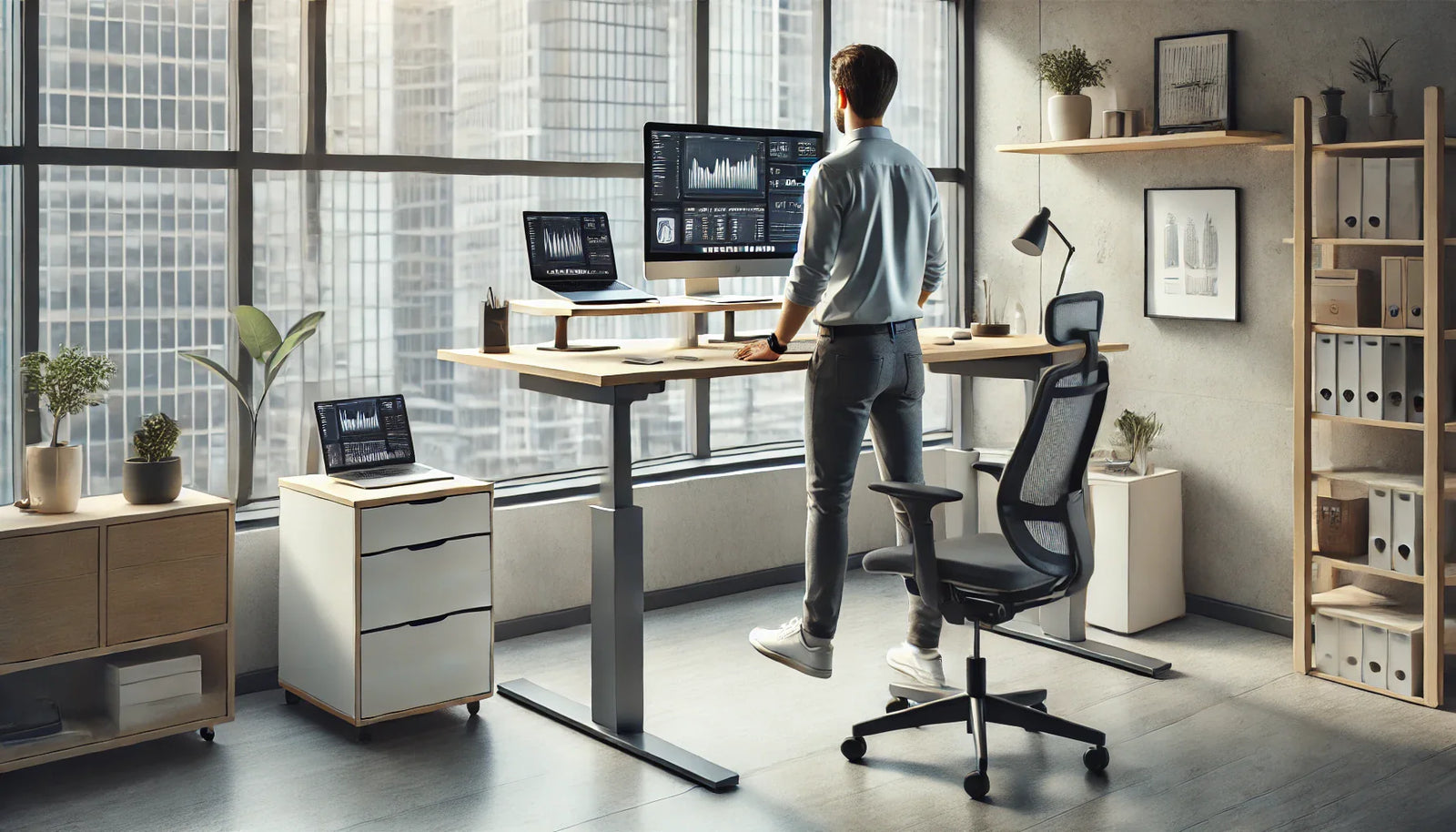Sitting for long hours at a desk can take a toll on your health and productivity. That’s why standing desks have gained popularity as a modern ergonomic solution for office workers and remote professionals. But are standing desks really beneficial? And how can you use them effectively to maximize comfort and efficiency? Let’s explore the advantages of standing desks and best practices for incorporating them into your work routine.
The Benefits of Standing Desks
1. Improves Posture and Reduces Back Pain
One of the biggest complaints among office workers is back and neck pain from prolonged sitting. A standing desk encourages better posture by:
-
Reducing slouching and hunching over the keyboard
-
Aligning the spine in a natural position
-
Engaging core muscles to provide better support
2. Boosts Energy and Productivity
Standing while working can help fight fatigue and increase alertness. Studies show that alternating between sitting and standing improves focus and concentration, leading to higher productivity.
3. Enhances Circulation and Reduces Health Risks
Extended sitting has been linked to health concerns such as obesity, heart disease, and diabetes. Standing desks promote better circulation, reducing the risk of these conditions by keeping the body more active.
4. Encourages Movement and Burns More Calories
While standing alone isn’t a workout, it burns more calories than sitting. Using a standing desk encourages small movements like shifting weight, stretching, or even walking around, contributing to better overall health.
5. Supports Mental Well-Being
A sedentary lifestyle can contribute to stress and low energy levels. Standing desks help maintain better posture, improve blood flow to the brain, and boost mood, leading to a healthier mindset throughout the workday.
How to Use a Standing Desk Correctly
Simply switching to a standing desk isn’t enough—you need to use it properly to avoid discomfort. Follow these best practices:
1. Adjust the Desk to the Right Height
-
Your screen should be at eye level to prevent neck strain.
-
Your arms should form a 90-degree angle while typing to maintain proper wrist alignment.
2. Alternate Between Sitting and Standing
Standing all day can also cause discomfort. Experts recommend alternating between sitting and standing every 30–60 minutes for optimal balance.
3. Use an Anti-Fatigue Mat
Standing for long periods can lead to sore feet and fatigue. An anti-fatigue mat provides cushioning and reduces strain on your legs.
4. Wear Comfortable Shoes
Supportive footwear makes a big difference in preventing discomfort while using a standing desk. Avoid heels or unsupportive shoes.
5. Maintain Good Posture
-
Keep your shoulders relaxed and back straight.
-
Avoid locking your knees or leaning too much on one foot.
-
Shift positions regularly to prevent stiffness.
6. Incorporate Movement
Use your standing desk as an opportunity to stay active by doing simple stretches, shifting your weight, or taking short walking breaks.
Moog Desk Sets: Enhance Your Standing Desk Setup
To make the most of your standing desk, an organized and clutter-free workspace is essential. Moog Desk Sets offer stylish and functional desk organizers, file holders, and accessories that help keep your workspace tidy. With an efficient setup, you can enjoy the full benefits of a standing desk while staying focused and productive.
Stand Up for Better Workdays
Standing desks offer a range of benefits, from reducing back pain to improving energy levels and productivity. By using them correctly and maintaining good posture, you can create a healthier and more efficient work environment. Make the switch today and experience the difference a standing desk can make!

